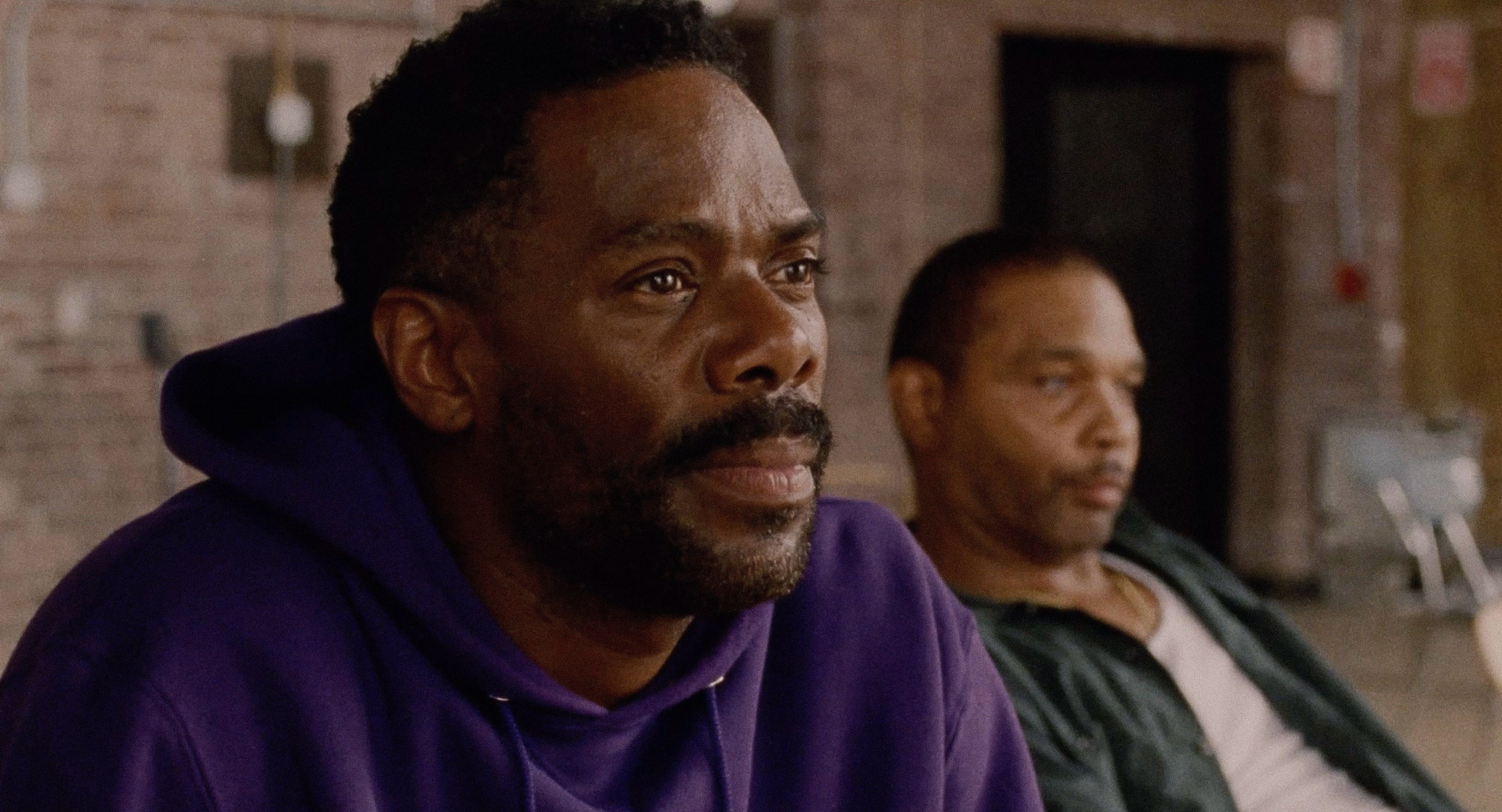Sing Sing – Film Review
Published November 27, 2024

Greg Kwedar’s Sing Sing is a heartfelt and intimate drama that brings the transformative power of art and the human spirit to center stage. Based on the real-life Rehabilitation Through the Arts (RTA) program at Sing Sing Maximum Security Prison, the film masterfully intertwines raw authenticity with emotional depth, delivering a cinematic experience that is as inspiring as it is thought-provoking. Featuring a compelling blend of professional actors like Colman Domingo and Paul Raci alongside real-life alumni of the RTA program, including Clarence “Divine Eye” Maclin and Jon-Adrian “JJ” Velazquez, Sing Sing stands as a testament to the resilience and creativity of the human spirit, even under the harshest circumstances.
The story centers on Divine G (played by Colman Domingo), an incarcerated man fighting to prove his innocence while discovering a profound sense of purpose through the prison’s theater program. The group’s efforts to stage an original production, Breakin’ the Mummy’s Code, serve as the backdrop for a narrative that explores identity, redemption, and the power of community. The film doesn’t just focus on Divine G’s journey but paints a broader picture of the prison experience, emphasizing the camaraderie, struggles, and small victories of the inmates involved in RTA.
At its core, Sing Sing is about transformation—not only the artistic kind but personal growth born out of connection and vulnerability. Divine G’s journey mirrors that of many in the RTA program, finding a sense of freedom through self-expression despite the physical confines of prison walls. Divine Eye (played by Clarence “Divine Eye” Maclin) serves as an engaging counterpoint to Divine G, challenging his perspectives while embarking on his own arc of growth. Their evolving dynamic drives much of the film’s emotional weight, offering moments of tension, humor, and genuine reconciliation.
What sets Sing Sing apart is its seamless blend of scripted storytelling and the authentic voices of formerly incarcerated individuals. By casting real-life alumni of the RTA program, the film imbues its narrative with a layer of truth that is impossible to manufacture. The scenes featuring acting exercises and rehearsals feel incredibly natural, capturing the vulnerability and awkwardness of men stepping outside their comfort zones. This authenticity grounds the film, making it more than just a drama—it becomes a bridge between the audience and the often unseen humanity within the prison system.
Colman Domingo shines as Divine G, delivering a nuanced performance that balances strength and fragility. His portrayal captures the weight of unjust incarceration and the bittersweet hopefulness of finding purpose in the unlikeliest of places. Clarence “Divine Eye” Maclin, playing a version of himself, brings an unpolished yet captivating energy to the screen, his character’s arc as raw and real as the man himself.
Paul Raci, as the theater director Brent Buell, provides a steadying presence, portraying a mentor whose belief in the inmates never wavers. His understated performance complements the more intense emotions of the ensemble, highlighting the importance of allies and advocates in rehabilitation.
Greg Kwedar’s direction is both empathetic and restrained, allowing the material and performances to take center stage. The decision to include archival footage of actual RTA performances in the closing scenes is a masterstroke, grounding the fictionalized story in real-world context and reminding viewers that these are not just characters—they are people whose lives have been deeply affected by the program.
The production design deserves special mention for its stark yet evocative portrayal of prison life. The monotony of the prison environment contrasts sharply with the vibrant, messy creativity of the theater group, visually reinforcing the transformative power of art. Cinematographer Pat Scola uses tight framing and natural lighting to create an intimate atmosphere, drawing viewers into the emotional lives of the characters. The theater scenes, in particular, are shot with an almost documentary-like authenticity, heightening their impact.
The greatest strength of Sing Sing lies in its ability to humanize a population often marginalized and dehumanized in society. The film avoids clichés and caricatures, instead presenting its characters as complex individuals shaped by their circumstances but not defined by them. This is especially evident in the film’s portrayal of the camaraderie among the inmates, which feels genuine and earned.
The narrative’s focus on art as a tool for rehabilitation is both inspiring and thought-provoking. The film doesn’t shy away from the challenges faced by the inmates, including setbacks like Divine G’s denied parole, but it also highlights the victories, big and small, that come from personal growth and mutual support. The inclusion of real-life stories and performers adds a layer of authenticity that elevates the film beyond typical prison dramas.
While Sing Sing succeeds on many fronts, it is not without its flaws. The pacing occasionally falters, particularly in the second act, where some scenes feel repetitive or drawn out. Additionally, the subplot involving Divine G’s fight to prove his innocence, while compelling, is underexplored and feels somewhat disconnected from the main narrative. A deeper dive into this aspect of his life could have added more complexity to his character and heightened the stakes of his journey.
The ensemble cast, though uniformly strong, occasionally struggles with balancing the line between naturalism and performance. Some of the real-life participants deliver moments that feel slightly stilted, though this is more a reflection of their inexperience as actors than a critique of their contributions to the film.
The film’s final act is both heartbreaking and hopeful. Divine G’s emotional breakdown and eventual reconciliation with Divine Eye feel earned, their resolution underscoring the importance of forgiveness and second chances. The closing scenes, which show real footage of RTA alumni performing onstage, serve as a powerful reminder of the film’s real-world impact, leaving audiences with a sense of both closure and urgency.
Sing Sing is a deeply moving exploration of art’s ability to heal and transform, set against the backdrop of a broken prison system. Greg Kwedar and his team have crafted a film that is as much about hope and redemption as it is about the enduring power of community. By blending professional performances with the authentic voices of formerly incarcerated individuals, the film achieves a level of authenticity and emotional resonance that is rare in cinema.
Despite some minor flaws, Sing Sing stands as a compelling and important piece of filmmaking. It challenges audiences to reconsider their perceptions of incarceration and rehabilitation, offering a glimpse into the lives of those who refuse to let their circumstances define them. In doing so, it becomes not just a story about prison life, but a universal tale of resilience, creativity, and the unyielding pursuit of freedom—both physical and emotional.
